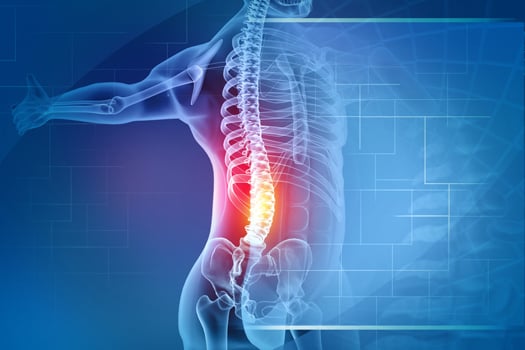
Lumbar disc problems are a common cause of back pain and other related symptoms. These problems can occur for a variety of reasons, including injury, age, and disc degeneration. X-rays are a commonly used diagnostic tool for detecting spinal problems. However, the question is whether lumbar disc problems show up on X-rays. This article explores this question in detail to help you understand the limitations and benefits of using X-rays to diagnose lumbar disc problems.
What Are the Most Common Lumbar Disc Problems?
The lumbar spine is the lower part of the back that consists of vertebrae and discs that cushion and support the spine. Lumbar disc problems occur when one or more of these discs become damaged, displaced, or degenerated. This can cause pressure on the spinal nerves, leading to lower back pain, leg pain, numbness, and other related symptoms.
Lumbar disc problems can include:
- Herniated disc – This occurs when the soft inner part of the disc bulges out through a tear in the outer part of the disc, causing pressure on the spinal nerves.
- Degenerative disc disease– This occurs when the discs in the spine lose their ability to cushion and support the spine due to age or wear and tear.
- Spinal stenosis– This occurs when the spinal canal narrows, putting pressure on the spinal nerves.
Do Lumbar Disc Problems Show Up on X-Rays?
The answer is not straightforward. X-rays are not the best imaging tool for detecting lumbar disc problems, as they only show the bones and not the soft tissues, such as the discs and nerves. However, X-rays can still be useful in diagnosing certain aspects of lumbar disc problems. X-rays can detect:
- Structural changes in the spine – X-rays can show changes in the alignment, curvature, and size of the vertebrae, which can indicate lumbar disc problems.
- Bone spurs – X-rays can detect the growth of bony projections on the vertebrae, which can occur due to degenerative disc disease.
- Fractures – X-rays can detect fractures in the vertebrae, which can result from trauma or injury.
- Osteoarthritis – X-rays can detect the degeneration of the joints in the spine, which can be caused by degenerative disc disease.
While X-rays are not the best imaging tool for diagnosing lumbar disc problems, they are still useful in providing valuable information about the structure and alignment of the spine, which can help your doctor make a more accurate diagnosis.
What Imaging Techniques Are Best for Diagnosing Lumbar Disc Issues?
While X-rays can provide some information about lumbar disc problems, other imaging techniques are better suited for detecting and diagnosing these problems.
- Magnetic resonance imaging (MRI) – This imaging technique uses a strong magnetic field and radio waves to produce detailed images of the soft tissues, such as the discs, nerves, and muscles. MRI is the most commonly used imaging tool for diagnosing lumbar disc problems, as it provides a clear view of the problem and helps your doctor develop a treatment plan.
- Computed tomography (CT) scan – This imaging technique uses a combination of X-rays and computer technology to produce detailed images of the bones and soft tissues. CT scans can detect spinal stenosis, fractures, and other structural problems in the spine.
- Myelogram – This imaging technique involves injecting a contrast dye into the spinal fluid and then taking X-rays or CT scans. Myelograms can detect spinal stenosis, herniated discs, and other nerve-related problems.
- Discography – This imaging technique involves injecting a contrast dye into the disc and then taking X-rays or CT scans. Discography can detect herniated discs and other disc-related problems.
Imaging tests can be very effective at diagnosing a wide range of spine-related issues, and they can help your doctor make final decisions about recommended treatment, which may eventually include a surgical procedure such as a lumbar discectomy. Although discectomy surgery is generally a very successful procedure, patients with a larger hole in the outer ring of the disc have a significantly higher risk for herniation following surgery. Often, the surgeon will not know the size of the hole until he or she begins surgery. A new treatment, Barricaid, which is a bone-anchored device proven to reduce reherniations, was specifically designed to close the large hole often left in the spinal disc after discectomy. In a large-scale study, Barricaid was proven 95 percent effective. This means 95 percent of patients did not experience a reoperation due to reherniation in the 2-year study timeframe.
If you have any questions about the Barricaid treatment or how to get access to Barricaid, ask your doctor or contact us at 844-288-7474.
For full benefit/risk information, please visit: https://www.barricaid.com/instructions.


Comments